With the Assassin’s Creed Chronicles trilogy, the popular series takes a detour from its traditional open-world stealth action gameplay and rich, Byzantine plots to bring fans a 2.5D cinematic platformer with a storyline sweeping across four centuries and the entire Eurasian landmass. Published by Ubisoft and developed by UK-based Climax Studios in association with Ubisoft Montreal, Assassin’s Creed Chronicles was released in three installments over the past year: Assassin’s Creed Chronicles: China (April 2015), India (January 2016), and Russia (February 2016). Ubisoft was kind enough to send us a key for the whole trilogy, so keep reading to find out what we thought.
From Macau to Moscow
Like all Assassin’s Creed games, you’re actually playing the game through the memories of Assassin’s past, so when you die you get “desynchronized”, and training screens and challenge rooms have a distinctly modern, even futuristic feel. But the actual storyline takes place in China in the 1520s, India in the 1840s, and Russia in the midst of the Revolution and the ensuing civil war in the early 20th century.China begins in 1526, and the plot follows an Assassin known as Shao Jun, who had left China to be trained by old Ezio Auditore himself. She returns to China to find the Brotherhood wiped out by the Eight Tigers, an historical cabal of eunuchs who wielded great power over the imperial court. Of course, this is an Assassin’s Creed game, so they are actually Templars bent on world domination through treachery, or something. Shao Jun launches a quest for revenge, killing the Eight Tigers and their leader on an adventure that takes her to all the stereotypical Ming China locations: from Macau at the beginning of Portuguese activity there, to the Forbidden City at Beijing, to the Great Wall during the course of a Mongol invasion. When she’s finally killed the last guy by stabbing him through the mouth (and he somehow keeps talking), her work is done, and she gives a speech about how her people are now free from the yoke of oppression. Yeah, that seems to have worked out well.
India takes place in mostly northwestern India, where the British East India Company was then making inroads into the Sikh Empire. The storyline starts in 1841 in Amritsar in the Punjab region, where protagonist Arbaaz Mir is on a mission to steal the powerful Koh-i-Noor diamond from a newly arrived Templar Master – Major-General William Sleeman, the man who in real life suppressed the Thuggee secret society of murderers and thieves (hey, not all assassins are noble souls). Arbaaz will have to rescue his mentor Hamid, and also keep his lover safe, the beautiful princess Pyara. Locations include several Precursor Temples as well as a fort in Herat, Afghanistan (actually Ghazni) during the Anglo-Afghan War.
The final installment, Russia, takes place during the confusion following the October Revolution. The game accurately reflects how not just the Bolsheviks, but various factions, were scrambling for power all over the country. The protagonist, Nikolaï Orelov, is a veteran Assassin who wants nothing more than to leave with his family and flee to America, but he’s given one last assignment – to enter the house in Yekaterinburg where the tsar and his family are being held captive by the Bolsheviks in order to steal a powerful artifact (hint: it probably has something to do with Arbaaz’s diamond and Shao Jun’s wooden box). He arrives in time to witness the murder of the tsar’s children, but manages to rescue the princess Anastasia, because of course he does. Orelov and Anastasia embark on a journey across Russia, with locations including Kazan, the Volga, and finally Moscow itself. Trotsky himself even makes an appearance, but I’ll let you discover whose side he’s on.
All three stories are loosely connected and are told either via in-game dialogue, text boxes, or most importantly, in a series of limited animation cut scenes in various artistic styles. This is a platformer, so an excuse plot is ... excusable. But in the case of the AC Chronicles games, most players are probably going to just skip through the cut scenes, since while they are beautifully illustrated, they’re rather boring, and the voice acting is nowhere near the kind of quality you’d expect from a game in this series (though admittedly, this is a lower-budget game). But frankly, while the plot is cool, and backed up by an Animus database well stocked with accurate info on locations, units, characters, etc., the gameplay is where it’s at.
Wall-Climbing, Body-Hiding, and Haycarts The basic gameplay of all three games is the same, with significant variations. Like any Assassin’s Creed game, the idea is to remain hidden most of the time, striking when you need to, in order to reach some goal at the end of the mission. You can hide in bushes, behind curtains, in alcoves, behind pillars, etc. (hiding places are usually indicated in green) in order to get past guards and kill or otherwise immobilize them from the darkness. There’s Eagle Vision to get a better understanding of your surroundings, and you can of course make jumps from greats heights into hay carts. Each Assassin has a variety of different gadgets, and their own personality and play style.
Playing AC Chronicles, the game it most reminded me of in terms of its gameplay style, aesthetic design, and wide variety of fun ways to solve puzzles was not another side-scroller or even the regular Assassin’s Creed series, but 2003’s Prince of Persia: The Sands of Time, especially in India. Unsurprisingly, that game was developed by Ubisoft Montreal, and while it was mostly 3D, many of the climbing sequences were essentially 2D, with forced camera rotations and the like. Seeing as that was one of my favorite games of that era, this in no way detracts from AC Chronicles.
The levels are massive, sprawling in all three directions. While they are almost entirely linear, the level designers did a great job of hiding this lack of freedom in most places, and the puzzles and other gameplay elements are as diverse as you can get with a 2.5D platformer. Most levels involve sneaking about trying to save someone or kill someone, but there are also lots of timed levels where you have to escape as things are exploding all around you, or outrun an elephant or even a freaking tank. Sometimes you have to kill all the guards in an area, other times none of them. Some of my favorite sequences were the ones where you could use a sniper rifle to take out guards on another plane behind the one you’re on. The challenge there is in shooting them in exactly the right place without alerting the others.
Guards usually move in set patterns, and the trick is to figure out their routines, along with the strengths and weaknesses of various guard types. They all have a cone of vision, and if you enter it, they’ll go on alert, in which case their cone of vision turns yellow. If you stay in sight long enough, it turns red and they raise the alarm. At this point, your only way out is open melee combat, which is usually a death sentence. In any event, the levels are conveniently broken down into areas, so if you get seen or the alarm is raised, there’s no harm in restarting the sequence.
Another reason you want to avoid getting seen or raising the alarm is because your score at the end of the mission is what determines whether you get extra life, extra speed, etc., or can carry more gadgets. There are always three playstyles: Shadow, Assassin, and Brawler in China and Shadow, Silencer, and Assassin in India and Russia. You can always get the highest score by getting “Gold” on Shadow, which means no killing, knocking out, or alerting anyone to your presence. I for one, quickly got bored with all that stuff and resorted to mostly just assassinating my way through or knocking everyone unconscious. But to each his own.
Gadgets and Gizmos Aplenty As I mentioned before, each playable character sports a variety of different gadgets in addition to their main combat abilities (which you hopefully never have to use). All of them are able to whistle, attracting attention to that location. Shao Jun also has noise darts to attract attention to a different location, firecrackers to disorient enemies, and throwing daggers used mostly to cut ropes. Arbaaz has noise bombs instead of noise darts, smoke bombs to confuse enemies, and chakrams to cut things, though the chakrams can also be bounced off of walls and the like. Both characters can kill their enemies with a variety of weapons, though Arbaaz can also choose to use non-lethal means to take them out.
Orelov is a bit different. He uses smoke bombs like Arbaaz, but he wields a custom rifle, which can be used like the daggers/chakrams and also as a sniper rifle in certain spots. His most unique gadget is a sort of electrified grapnel gun, which he can use to remove grates, pull things or even pull himself, electrify puddles of water, and short out electrical boxes to turn off the lights in a room or disable traps. On some missions, you can play as Anastasia, whose abilities are somewhat limited – she can’t even move bodies to hiding spots. A few levels have Anastasia and Orelov on parallel planes, with Orelov covering the princess with a sniper rifle.
Finally, each player character has a variety of Helix abilities, such as Helix Dash, allowing them to quickly move between hiding places without being detected. These are explained as glitches in the system, enabling the characters to do things in the memory simulation that they otherwise would not have been able to do in real life. To perform these tasks, you need to collect blue shards that fill your Helix meter. Other skills include Helix Strike, which allows for chain kills without detection, Helix Blade makes it possible to make enemy bodies disappear, and Helix blend, which allows the avatar to become undetectable, even in broad daylight.
All in all, the gameplay is a lot of fun, and there’s a lot of diversity, especially in India and Russia. The stealth puzzles can be pretty tricky, though usually you at least have a vague idea of what to do, either because they straight up tell you or because anything you’re supposed to climb on or interact with is red. My only real beef in terms of gameplay is that the controls are pretty wonky and sometimes don’t seem to work, which is by now almost a trademark of Ubisoft, and of the Assassin’s Creed games in particular. This is especially frustrating in levels where speed is crucial, and it mostly comes from the fact that the controls are context sensitive, so for instance moving the analog stick up either does nothing, allows you to hide, climbs up a wall, etc. – sometimes you’re in a spot where a variety of things can happen, and the game has a hard time figuring out which one you want to do.
2.5D in a 3D World So what’s it all look like? Well, growing up in the 80s and 90s, it took a long time for me to get over the idea of 3D as anything but a gimmick. And then it took a long time for developers to realize that photorealism and lens flares and bloom and all that are not needed to make a great-looking game, and that 2D games didn’t need to be “improved on”. Assassin’s Creed Chronicles actually does a great job of being modern but also not abandoning the kind of gameplay that had many of us sitting in front of a Super Nintendo for hours on end. Not only that, it embarks on a very ambitious design principle for the three games, and largely succeeds.
So first, let me get some negatives out of the way. The game is a bit too pixelated for modern consoles, and it would be nice to see that smoothed out a bit. Another thing that bothered me was the way that the levels load: rough textures load first, then the details come in a second or two later, which can really be an eyesore.
But most of all, I was impressed with the graphics and the design. China is done in such a way that it appears to be a watercolor painting. This is shown not only in the cutscenes, but also in the game itself: backgrounds are only hinted at by splashes of color, cherry trees are nothing but some suggestive pink splotches, and best of all, when you attack an enemy, blood is depicted as a sudden scarlet brushstroke. The costumes of the various guard types were also pretty cool, some modeled off of real armor and gear of that era.
India is entirely different, with most patterns based on Persian tracery and mandala designs. When swords clash, there’s a geometric pattern resembling a mandala emanating from the spot, and the architecture of the buildings and rich, bright colors are just gorgeous. There’s also a graininess to the whole thing that gives it a sort of oil painting feel. The soldiers you encounter, especially those of the East India Company, make it obvious that the developers did their homework, as most of them are highly accurate depictions of British colonial troops and their Sikh allies during this time.
In terms of visuals, Russia was my favorite. After the lush, fantasy-like setting of India, Russia is stark, cold, sterile, and dangerous. The basic design is obviously modeled off of early Soviet-era propaganda posters, with grey as the most prominent color in the urban areas, standing in sharp contrast to the red interactive elements and to the characters themselves. Outside, the ornate architectural styles of late Imperial Russia are on display, accompanied by all the signs of modernity – trains, trucks, cranes, elevators, and barbed wire. Inside the stately mansions there’s lots of color, and in the backgrounds you can recognize famous landmarks such as St. Basil’s Cathedral and the Kremlin. One of the coolest visual details to me were the banners and signs everywhere, accurately written in an old-style Russian before Lenin’s spelling reforms.
Let Me Hear Your Balalaikas Ringin’ Out
The sound design of AC Chronicles is pretty decent for the most part, but nothing to write home about. Each game in the series has its own musical style, and pretty much what you’d expect from each location and era: “Chinesey” sounds in China, Oriental strings in India, etc. Sound effects were of the normal variety: the “shink” of a blade being drawn, background noises like trains and trucks, chakrams bouncing off of walls, etc.The voice acting I found to be pretty below par, however. The exception was India, as Arbaaz did have a nice, Indian English accent that was easy to listen to. The other ones, apart from being wooden, just seemed fake. Shao Jun’s British accent could not decide whether she was Chinese, especially in the way she butchered the Chinese names (e.g. she says Zhao Yong as “Zow Yong” instead of “Chow Young”), but that’s a detail only a pedant like me would notice. Orelov also had a ridiculous accent that could have been toned down a bit. Yes, we get the “gruff Russian guy” thing already. Most of all though, you just never feel like the characters are anyone you care about, and their stories aren’t all that exciting either, which makes it all very skip-worthy. I did get a kick out of it when Orelov told Anastasia “come with me if you want to live”, but I’m not sure the reference was intentional or not.





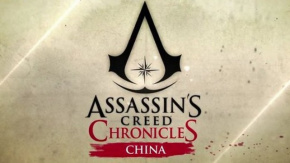







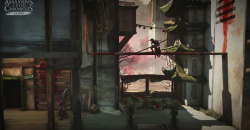

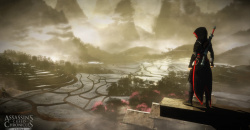
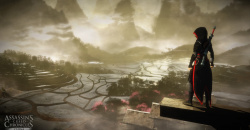
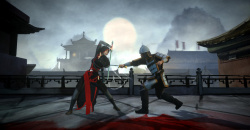
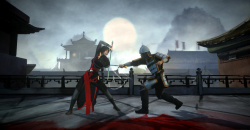
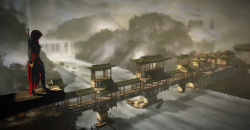
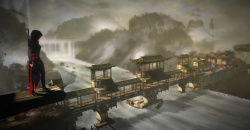

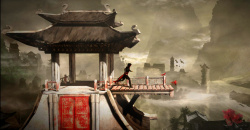



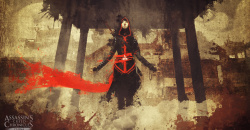
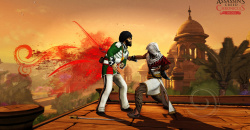

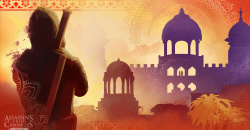
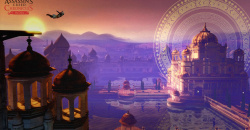

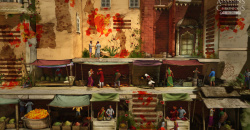
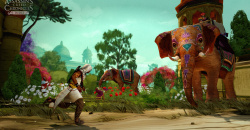
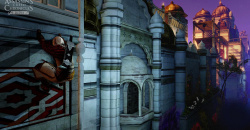
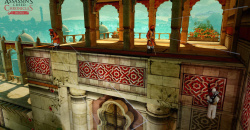
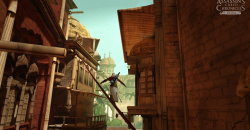
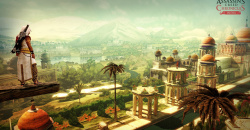
SASA
could you please send code to
Could you please send a key to .... thanks a lot... I can´t afford so much games and I really looked forward to this game....
ррр
pleas give me key for help the boys dragus
sadasd
ZGRQEBQEVQEVR
wwowowowow
иии
efefwedcsac